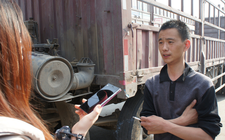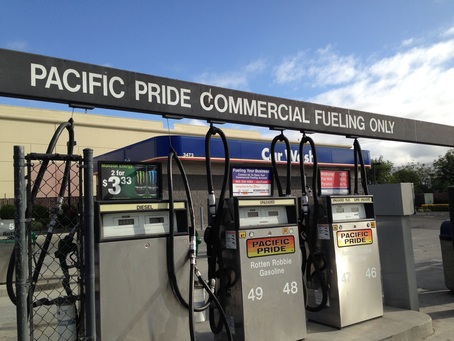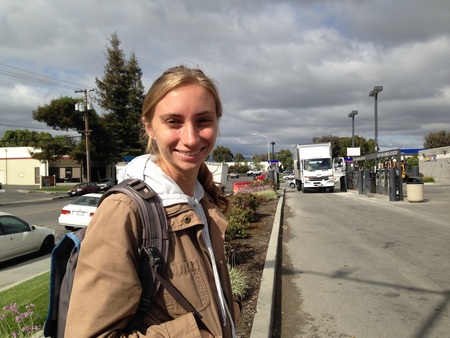Green Cloud
Using new media to overcome fragmentation and inefficiencies in the Chinese trucking industry

Freight volume in China has increased faster than GDP from 2008 to 2012 (World Bank, Clean Air Asia - 2012). Air pollution has also become a major problem in Chinese cities, registering unhealthy levels of air pollution on a regular basis.
On the other hand, smart phone ownership and number of users on social media platforms such as Weibo, WeChat and QQ have exploded. The Guardian projects sales of 283 million cell phones in China in 2014 (76% of which are smart phones), and WeChat now has 355 million active users. Truck drivers already use cell phones to communicate with colleagues, family and friends.
We want to tap into this trend to overcome industry fragmentation and give truck drivers the tools and knowledge needed to reduce their gas consumption and the related air pollution.
On the other hand, smart phone ownership and number of users on social media platforms such as Weibo, WeChat and QQ have exploded. The Guardian projects sales of 283 million cell phones in China in 2014 (76% of which are smart phones), and WeChat now has 355 million active users. Truck drivers already use cell phones to communicate with colleagues, family and friends.
We want to tap into this trend to overcome industry fragmentation and give truck drivers the tools and knowledge needed to reduce their gas consumption and the related air pollution.
Step 1: Trucking Industry Context
CHINA
Trucks are responsible for a large part of the air pollutants coming from the transportation industry. They produce 76% of particulate matter (PM), which is one of the pollutants responsible for smog. At the same time, the Chinese trucking industry is highly fragmented: in 2011, 59% of China's 11 million commercial trucks were owned by owner-operator drivers, and only 2.9% of trucking companies owned more than 50 trucks. Inter-city trips are rarely optimal, with 40% of trucks running empty and an average loading/unloading time of 72 hours.
CHINA
Trucks are responsible for a large part of the air pollutants coming from the transportation industry. They produce 76% of particulate matter (PM), which is one of the pollutants responsible for smog. At the same time, the Chinese trucking industry is highly fragmented: in 2011, 59% of China's 11 million commercial trucks were owned by owner-operator drivers, and only 2.9% of trucking companies owned more than 50 trucks. Inter-city trips are rarely optimal, with 40% of trucks running empty and an average loading/unloading time of 72 hours.
|
Largest Logistic Platform in Beijing.
Photos by Yipei Shen. |
Step 2: Field Research and Interviews
Both the American and Chinese counterparts of our team conducted interviews with truck drivers in their respective vicinities.
Yipei and Yuxiang interviewed 60 drivers at a logistics center in Beijing. At the logistics center, truck drivers wait for up to 5 days to load their trucks before leaving. It was a a good place to catch truck drivers during down time.
Both the American and Chinese counterparts of our team conducted interviews with truck drivers in their respective vicinities.
Yipei and Yuxiang interviewed 60 drivers at a logistics center in Beijing. At the logistics center, truck drivers wait for up to 5 days to load their trucks before leaving. It was a a good place to catch truck drivers during down time.
Step 3: App Design
Based on preliminary research, we considered the following three options for an app.
Based on preliminary research, we considered the following three options for an app.
- A LBS (location based service) app: enabling owner-operators to share information about traffic, local businesses and area safety.
- A load management platform: linking clients, drivers and logistic companies to help optimize truck loads and trips.
- A driver toolkit app: providing the basic function drivers may need in work, such as weather forecast, easy accounting, simple schedule and voice instant communication.
TEAM








